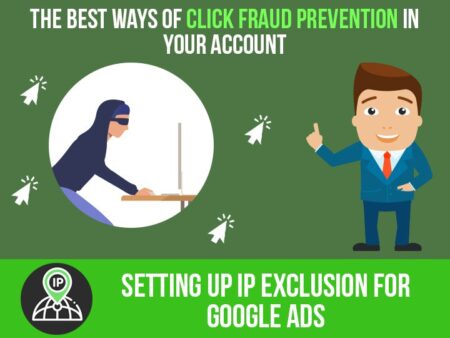 While speaking to advertisers who debate about exploring paid searches, a common hesitation that crops up with click fraud. Though sounding like paranoia, it is a valid concern of many PPC practitioners. However, the fearlessness of click fraud should not be a reason to avoid PPC. You are protected if you remain cognizant of the phenomenon and keep a watchful eye on your account in addition to employing proactive measures to protect you.
While speaking to advertisers who debate about exploring paid searches, a common hesitation that crops up with click fraud. Though sounding like paranoia, it is a valid concern of many PPC practitioners. However, the fearlessness of click fraud should not be a reason to avoid PPC. You are protected if you remain cognizant of the phenomenon and keep a watchful eye on your account in addition to employing proactive measures to protect you.
What Exactly Is Click Fraud?
Referred to as a black-hat technique, click fraud falsely inflates the number of clicks on a pay-per-click ad. The motive behind such frauds are two incentives, they are:
- Advertisers attempt to sabotage competitors by driving up the costs and meet their budget caps early on in a day.
- Ad publishers click on displayed ads on their website for generating more revenue.
What Preventive Measures Are Taken By Search Engines?
Over the last several years, search engines have done a lot for identifying and quashing click fraud. Although unwarranted, irrespective of the fact that a click is malicious or not, it generates dough for the search engines displaying it. Hence, to upload their reputations and putting weary advertisers’ minds at rest, most ad platforms have their own designated techniques that deal with click frauds.
Google has the most robust anti-click fraud program where its system detects usage of three prolonged approaches starting with automated filters. Its advanced algorithms are capable of detecting and filtering out invalid clicks in real-time. Hence it means they are filtered even before an advertiser gets charged.
Additionally, as the system isn’t capable of catching all fraudulent clicks, Google Ad Traffic Quality Team conducts manual offline analysts and removes clicks that are suspicious and invalid. Besides the proactive measures, Google has its investigation system based on the advertiser’s reports of suspicious activity. The moment it detects a malicious click, it labels it as “invalid” and credits get issued to the account.
How Can You Identify Click Fraud In Your Account?
Now that you are aware of click fraud, you must be wondering if malicious clicks have been happening in your account. You shouldn’t worry about such instances as you have numerous ways of identifying if you have been a victim of click fraud. For getting a full rundown, you can turn on the WordStream’ Evan Cummins.
He explains what the marketing services team is doing for monitoring their clients’ accounts. He elaborates that depending on the resources and time, you may commit to monitor click fraud. The problem can be approached in two different ways i.e., by conducting manual analysis or using an automated solution.
Doing It Yourself
In case you opt for manual analysis, you need internal reporting. Generally, it’s preferred to have internal reporting in some form irrespective of the fact that you aren’t sure if you have been a victim. This is because Google can only tell you if a click eventually converted into a lead. Internal reporting tells you if that lead became a sale. If you have this information, you can adjust your bidding in favorable terms that are more likely to convert into a sale.
For tracking click fraud, internal reporting offers you few pieces of information such as:
- IP Address
- Action Timestamp
- Click Timestamp
- Action Timestamp
An IP address is self-explanatory but the other three are important indicators too. For example, click timestamp and action timestamp when used together lets you see the IP address that is arriving on your website after clicking on an ad, but isn’t converting or rarely converting. Click timestamp indicates the time when a person arrives on your website after clicking an ad. On the other hand, an action timestamp is a time when the visitor completes an action on your website.
In case you observe an IP address doing a bunch of click timestamps with no action timestamps, it’s possibly a click fraud. The user agent is useful to identify if a visitor from a particular IP is the same person. It jots down the features of the device that is used for accessing your websites such as the device, computer, browser, or software.
After you detect a fraudulent IP address, you need to perform a quick check of the IP on the website to see its geolocation. You may use whatsmyipaddress.com, ip2location.com, and similar sites to check the location.
Eliminating Click Fraud In Your Account
Although Google assures that it is doing everything to prevent click frauds, it remains a major issue. In case you aren’t sure if you can rely on Google to prevent invalid clicks, you should take a few measures yourself. Those measures may include:
- Turning to Facebook or Twitter Ads
- Setting up IP Exclusion for Google Ads
- Running GND Remarketing Campaigns
- Adjusting Ad Targeting
Staying vigilant and adopting the measures above can help you reduce the chances of click frauds with your account. Although it isn’t possible to completely eradicate such instances, such measures can help you substantially reduce the chances of becoming a victim of click fraud. If you are looking for an expert to help you with Google Ads or click fraud prevention in Clearwater, FL, contact ISEOU Company. The experienced team is aware of the best practices and can help you make the most from Advertising platforms.

